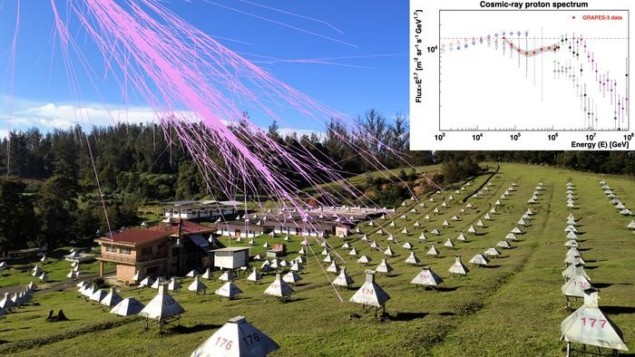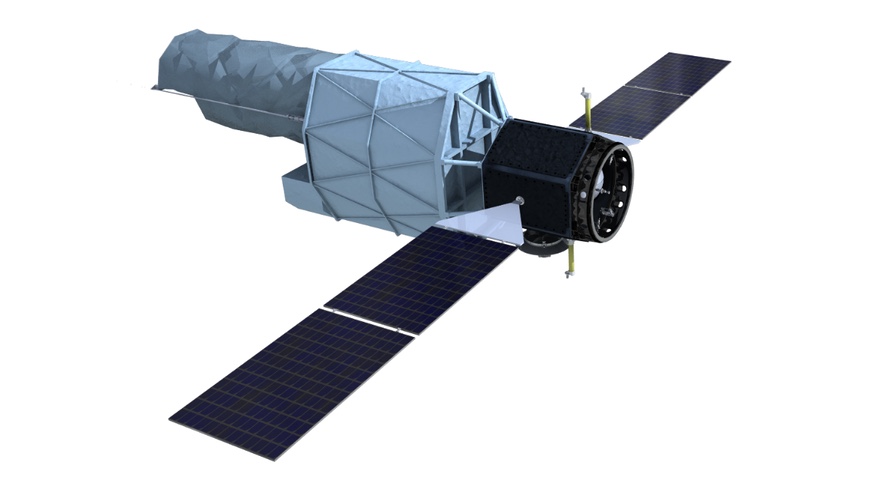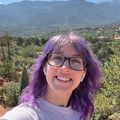-
Space photo of the week: Astronomers make an ‘artificial star’ over Hawaii
What it is: The Gemini North telescope When it was published: Feb. 7, 2024 Where it is: The Gemini Observatory at the summit of Mauna Kea in Hawaii Why it’s so special: Stars twinkle — and that isn’t good if you want to study them using large telescopes. The twinkling comes from light passing through…
-
Astronomers Caught Dark Matter in the Cosmic Web, Revealing an Unseen Universe
Researchers just detected dark matter on the cosmic web for the first time. Using a technique known as gravitational lensing, the team was able to detect the presence of dark matter even though we can’t see it, further confirming a long-held theory about the superstructure of our universe. Hopefully, the discovery will be able to…
-
Zoozve, the ‘quasi-moon’ of Venus, is officially named after space art error

Who names an asteroid? When astronomers first spot a new object in the sky, it gets a provisional ‘starter’ name that begins with the year the object was first spotted, followed by at least two upper-case letters to denote which part of the year it was found. The first letter is A through Y for…
-
Amateur astronomers can make breathtaking discoveries. This new photobook on Kickstarter shows how
Shining with a striking assembly of astronomy-centric imagery, a new Kickstarter campaign from artist Daniel Stephen Homer hopes to create what’s being described as the world’s first photobook exploring the deep global collaborations between amateur and professional astronomers. This limited edition project, titled “Route de la Belle Etoile” (Route of the Beautiful Star), highlights the…
-
Kink in cosmic ray spectrum puzzles astrophysicists

Kinky particles: the GRAPES-3 experiment in Ooty, India depicted with a simulated cosmic ray shower. The inset shows the cosmic ray proton spectrum measurement by GRAPES-3 along with observations by other space and ground-based experiments. (Courtesy: TIFR) Using observations from the GRAPES-3 muon detector, physicists in India and Japan have explored a poorly understood region…
-
NASA selects ultraviolet astronomy mission but delays its launch two years

TITUSVILLE, Fla. — NASA has selected an ultraviolet observatory for development but will delay its launch by two years because of budget challenges. NASA announced Feb. 13 that it chose the Ultraviolet Explorer, or UVEX, spacecraft as its next astrophysics Medium-class Explorer mission. The spacecraft will perform an all-sky survey at ultraviolet wavelengths and be…
-
Multi-resolution scanner

The challenge Tracking small changes in a complex space environment Life is demanding for humans living and working off-Earth. Food, materials, and other inventory must be tracked; damage monitored and repaired; and emergencies tended to. As we push forward to the Moon and Mars, astronauts’ time will become ever more precious. Limited crews will need…
-
Using Sound To Unpack The History Of Astronomy

02/09/2024 17:07 minutes Credit: Shutterstock Looking into space can be pretty daunting. How do we make sense of the vast expanse above our heads, the millions of stars we might be able to see, and the billions more we can’t? Now, what about listening to space? That’s the task that Sam Harnett and Chris Hoff…
-
Astronomers Discover Jupiter-sized Objects Drawn into Each Other’s Orbit
Newswise — In our most basic understanding of our Solar System, planets are drawn into the orbit of our massive star, the Sun. But what happens to planet-sized objects that don’t have a star? A team of astronomers studying Jupiter-mass binary objects (JuMBOs) in the Orion Nebula are gaining a new understanding of these unusual…
-
Why isn’t there a device to clean the solar panels on Mars rovers?

NASA’s Mars InSight lander was powered by two solar panels, one of which is imaged here. The mission ended when the panels became so dust-covered that they could not generate sufficient power to sustain the craft. Credit: NASA/JPL-Caltech Inevitably, Mars rovers or landers get covered with dust and the solar panels no longer function, ending…
